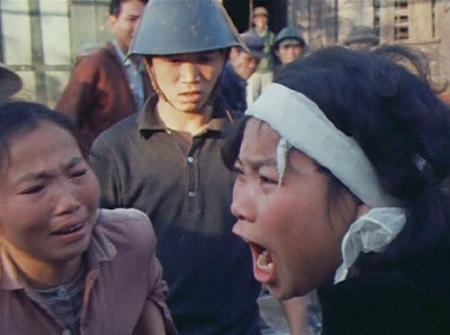North Vietnam's History: Thousands of Films Unearth a Nation's Past
The history of North Vietnam, a nation forged in revolution and shaped by decades of conflict and societal upheaval, is a complex tapestry woven from countless individual stories. While traditional historical accounts offer valuable insights, a unique and increasingly important source is emerging: the thousands of films produced during this period. These cinematic records, often overlooked in Western narratives, provide a fascinating glimpse into the daily lives, political ideologies, and cultural shifts that defined North Vietnam. This article delves into the significance of these films as historical artifacts and explores their potential for enriching our understanding of this pivotal era.
A Cinematic Chronicle: Exploring North Vietnamese Film Production
North Vietnamese cinema, under the guidance of the communist government, served as a powerful propaganda tool, promoting socialist ideals and celebrating national achievements. However, beneath the overt political messaging lies a rich vein of social realism, offering invaluable insights into the lives of ordinary citizens. Thousands of films, ranging from epic historical dramas to intimate documentaries, were produced between the 1950s and the 1990s, offering a diverse and multifaceted view of the nation's history.
Key Themes and Genres:
- Revolution and War: Numerous films depict the struggles against French colonialism and the subsequent war with the United States, emphasizing themes of national unity, resilience, and sacrifice. These films often romanticized the revolutionary struggle and portrayed the enemy as unequivocally evil.
- Socialist Construction: Post-war films focused on the nation-building process, showcasing the development of infrastructure, agriculture, and industry. These productions often highlighted the collective efforts of the people and the successes of socialist policies.
- Daily Life and Culture: While fewer in number, films documenting everyday life in North Vietnam provide a crucial window into the social fabric of the nation. These films capture weddings, festivals, and other cultural events, revealing the nuances of daily routines and interpersonal relationships.
- Propaganda and Ideology: The pervasive influence of communist ideology is undeniable in North Vietnamese cinema. Films often used symbolism and allegorical storytelling to promote socialist values and criticize capitalist influences.
Beyond Propaganda: Unearthing Hidden Histories
While acknowledging the inherent biases present in many of these films, their historical value remains undeniable. By analyzing these cinematic narratives alongside other historical sources, scholars can gain a more nuanced and comprehensive understanding of North Vietnam's past. For example, subtle details in seemingly propagandistic films can reveal aspects of daily life, social tensions, and individual experiences that official histories may have overlooked.
The Challenges of Access and Preservation:
Accessing and preserving these films presents significant challenges. Many are held in archives with limited access, and the film stock itself is deteriorating. Efforts to digitize and catalogue these films are crucial to ensuring their long-term preservation and accessibility for future research.
The Potential for Future Research:
The thousands of films produced in North Vietnam represent a vast and largely untapped resource for historians, filmmakers, and anyone interested in learning more about this complex and fascinating period in history. Further research into these films holds the potential to:
- Challenge existing narratives: By offering alternative perspectives and revealing hidden details, these films can help to challenge dominant historical interpretations of North Vietnam.
- Humanize the past: These films offer a more human-centered approach to history, highlighting the experiences and perspectives of ordinary citizens.
- Inform contemporary filmmaking: The stylistic and thematic approaches employed in North Vietnamese cinema offer valuable lessons for contemporary filmmakers.
Conclusion: A Cinematic Legacy
The thousands of films produced in North Vietnam constitute a significant cinematic archive that offers invaluable insights into the nation's history, culture, and political evolution. By actively researching, preserving, and analyzing these films, we can deepen our understanding of this crucial period and enrich our historical narratives. Further exploration of these cinematic treasures promises to reveal even more compelling stories from this remarkable chapter of history. We encourage researchers and enthusiasts to explore this rich resource and contribute to the ongoing efforts to preserve and interpret this invaluable legacy.
